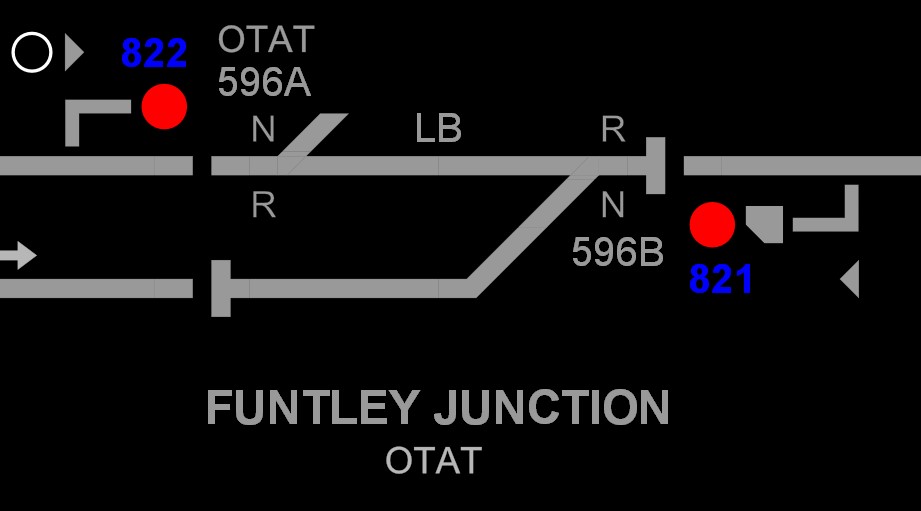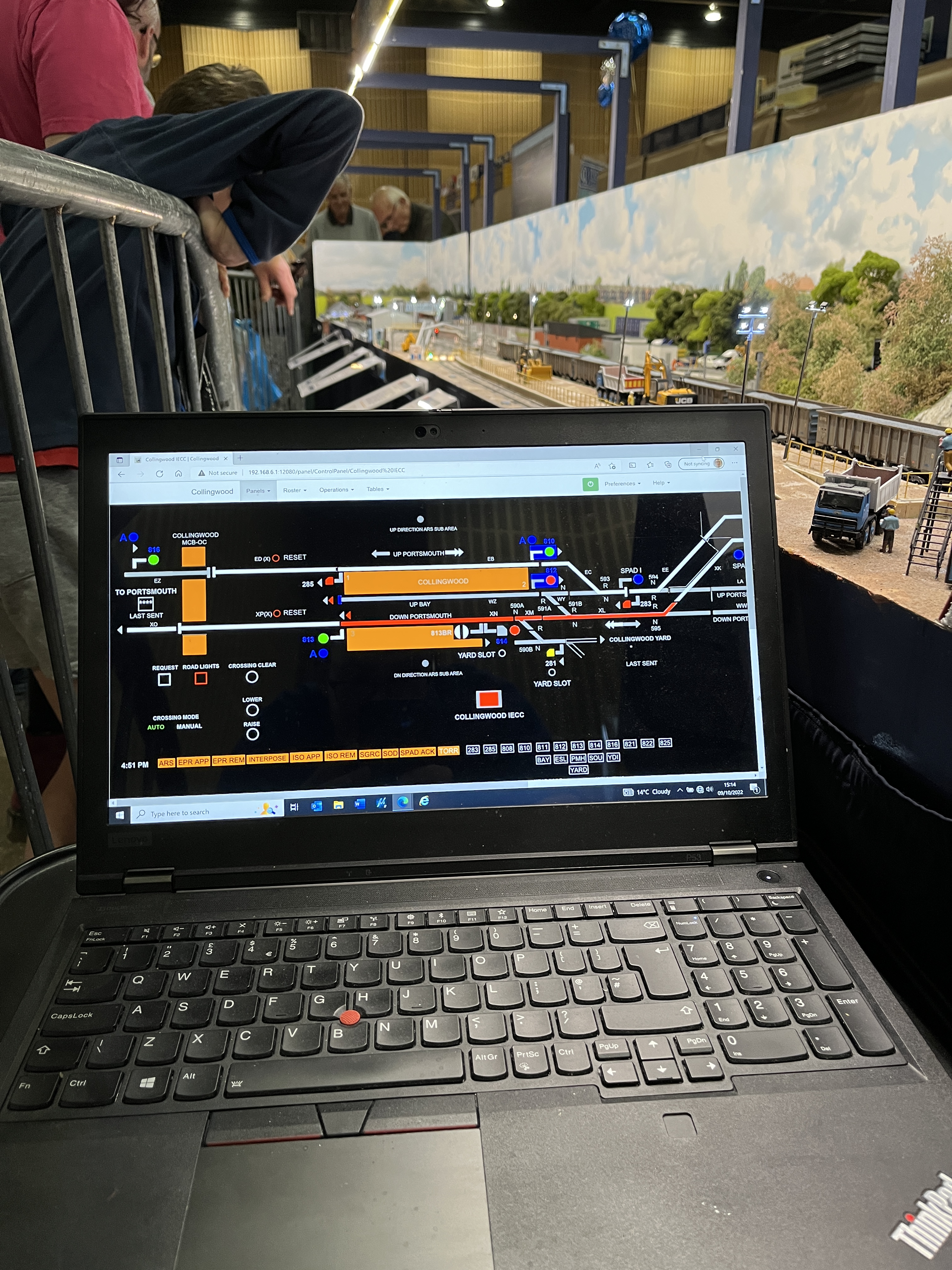In the last couple of posts, ‘Sectional Route Locking’ has been mentioned a fair amount, so it is now time to explain it.
Sectional Route Locking is the thing that binds all the processes of the interlocking together, it is the most powerful ‘tool’ in the interlocking, without it you are either in a whole heap of pain or you end up having to make the same checks in each of the interlocking processes.
That makes it sound very complex, but the beauty of it is how elegantly simple it is.
The concept behind ‘Sectional Route Locking’ is to make sure that the route ahead of the train is locked and can’t be used until the train has fully passed through each section in the route, even if the route has been released before fully traversed by a train.
Each train detection section has route locking applied to it individually. If a section has signalled routes over it in either direction, then that section has two separate route locking circuits. If the section is also part of an overlap, it has a separate overlap route locking circuit (and this in turn can have extra circuits if the track is an overlap for signals in different directions). For instance, ‘LB’ Track Circuit on Collingwood is an example of this:

This track has routes over it in both directions and also forms an overlap for signals in both directions, so would have four circuits:
- ‘UP’ Route Locking
- ‘DOWN’ Route Locking
- ‘UP Overlap’ Route Locking
- ‘DOWN Overlap’ Route Locking
Each of these have different individual conditions that apply the route locking, although they are all applied in the same way.
The sectional route locking in a route is applied by ‘cascading’ the locking down the route in the direction of travel, with setting of the route triggering it at the start of the route.
So, taking CD810 B(M) route again as an example, the route being set would apply the up direction sectional route locking for ‘EC’ Track Circuit. The application of the up direction sectional route locking for ‘EC’ Track Circuit would then cause the up direction sectional route locking for ‘EE’ Track Circuit to be applied. This would carry on until the locking reached CD822 Signal, at this point the application of up direction route locking on ‘LA’ Track would cause the up direction overlap route locking to be applied to ‘LB’ track.
There is however a small problem. This is that at the same time the route locking is being applied, the points are being called into the correct position. Now, as part of the point calling, the interlocking checks that the route locking for the track circuit over the points hasn’t been applied. Therefore, the route locking being applied (which is almost instantaneously) will prevent the points being moved (as this would lock up the points before they’ve had chance to unlock). To stop this, the sectional route locking for a track circuit containing points is not applied until the points have been called. So, in our case, the sectional route locking for ‘EE’ track is not applied until 594 points have been correctly called, which can be seen here:

Once all the sectional route locking has been applied, it cannot be removed until the route has been released and, if a train has entered the route, a train has passed fully through the track circuit. This is shown below, the route has been released (the post of CD810 is grey), but a train is still in the route and the route locking is preserved in front of it:

The exception to the above ‘rule’ is when removing the overlap sectional route locking.
The concept of an overlap is to provide a clear area ahead of the exit signal that is proved free of trains in case of a train driver misjudges their braking and overshoots the exit signal when it is at red. Therefore, it is legitimate to say that if a train can be proved to be fully under control and will not overshoot a red signal when approaching it, then an overlap is no longer needed (indeed, this is the argument for not providing overlaps in many ‘in-cab’ signalling systems).
This argument can be used to remove the overlap route locking. The locking can be removed once it has been proved that the train has been brought to a stand on the berth track circuit. This is done by timing the occupancy of the berth track circuit, once the time has elapsed with the overlap track unoccupied and the berth track circuit occupied, then the locking can be removed.
The timing of track proves the train has been brought to a stand and is based on the length of the berth track assuming a certain braking rate (the concept being that if a train hasn’t occupied the overlap within the time, then the train must be at a stand, or very close to it).
Also, it would be worth noting that the overlap route locking would still be applied and removed in the same way even if a route has set over it. i.e, the overlap route locking for ‘LB’ track would still be applied and removed even if the route from CD822 was set. So, that’s route locking, simple but very effective.

